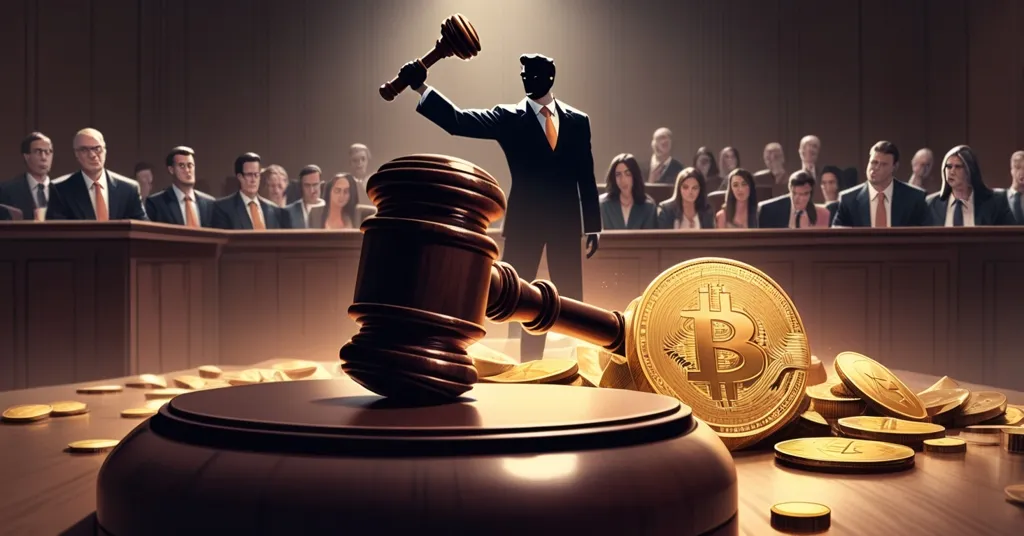FTX Sues for Crypto Recovery, Plans $16B Distribution to Creditors

FTX Launches Legal Battles to Recover Cryptocurrencies, Plans $16 Billion Distribution
FTX, the bankrupt crypto exchange, has initiated legal proceedings against NFT Stars Limited and KUROSEMI INC. (Delysium), alleging that these entities withheld tokens owed to the exchange. This move is part of FTX’s broader strategy to recover assets and repay creditors, with a significant $16 billion distribution planned to begin on May 30.
- FTX sues NFT Stars and KUROSEMI INC. for withheld tokens
- Plans to distribute $16 billion to creditors
- Chinese creditors face accessibility issues
- Over 90% of small creditors repaid
FTX, alongside the FTX Recovery Trust, has taken legal action in the Delaware bankruptcy court against NFT Stars Limited and KUROSEMI INC., which operates under the name Delysium. The exchange is demanding the return of 75 million AGI tokens from Delysium—tokens used in the SingularityNET platform to facilitate artificial intelligence development—and 1.35 million SENATE tokens and 135 million SIDUS tokens from NFT Stars. These tokens, which are integral to various blockchain ecosystems, were never delivered after being purchased by FTX’s trading arm, Alameda Research, prompting the legal action.
The FTX Estate has issued a stern warning to token and coin issuers, urging them to return assets that rightfully belong to FTX.
“We urge token and coin issuers to return assets that rightfully belong to FTX,”
stated the FTX Estate, emphasizing the urgency of their recovery efforts. The exchange is ready to escalate legal actions against any non-cooperative issuers, signaling a no-nonsense approach to asset recovery.
Under FTX’s Chapter 11 Plan of Reorganization—essentially a blueprint to restructure and repay debts, which was confirmed by the Bankruptcy Court on October 8, 2024—the exchange is set to distribute $16 billion in cash to its creditors starting May 30. This distribution is a pivotal step in the recovery process, aimed at repaying those affected by the exchange’s collapse. However, the process has hit snags, particularly for Chinese creditors who are restricted from accessing platforms like BitGo and Kraken, thus complicating their receipt of distributed funds.
Despite these hurdles, FTX has made significant strides in repaying smaller creditors. As of the second week of April, over 90% of creditors with claims under $50,000 have been fully repaid. Larger creditors are expected to start receiving payments in the second quarter of this year, with further distributions scheduled for May 2025. This phased approach reflects FTX’s commitment to a structured and fair repayment process, even as it navigates the complexities of global creditor distribution.
The legal actions and asset recovery efforts by FTX are not just about reclaiming lost funds; they’re a testament to the resilience of the cryptocurrency sector. While the crypto world often faces scrutiny and skepticism, stories like this highlight the potential for recovery and the ongoing evolution of the industry. Yet, it’s crucial to remain vigilant—scammers are always lurking, ready to exploit any situation. FTX has warned creditors to be cautious of fraudulent schemes targeting them during this period.
FTX’s recovery strategy may set a precedent for how bankrupt crypto entities handle asset recovery. It underscores the importance of contractual obligations and could influence the behavior of token issuers in the future. However, the journey is far from over, and the industry must continue to innovate and adapt to ensure greater stability and trust.
As champions of decentralization and the revolutionary potential of blockchain technology, it’s essential to acknowledge the challenges and pitfalls. FTX’s story is a reminder that even in the world of crypto, where the mantra is often “to the moon,” the reality can sometimes be a bumpy ride back to earth. Yet, with each challenge overcome, the sector grows stronger, proving that the dream of a decentralized financial future is not just a pipedream, but a tangible goal within our reach.
Key Takeaways and Questions
- Why is FTX taking legal action?
FTX is taking legal action to recover cryptocurrencies that were allegedly withheld by token issuers, NFT Stars Limited and KUROSEMI INC. (Delysium), as part of their broader effort to repay creditors following their collapse.
- What is the significance of the $16 billion distribution?
The $16 billion distribution is a significant step in FTX’s recovery process, aimed at repaying creditors and potentially boosting liquidity in the crypto market.
- What concerns do Chinese creditors have?
Chinese creditors are concerned about the distribution process due to restrictions on platforms like BitGo and Kraken, which are not accessible within China.
- How has the repayment process been progressing for smaller creditors?
Over 90% of creditors with claims under $50,000 have been fully repaid as of the second week of April.
- When will larger creditors start receiving payments?
Larger creditors are expected to start receiving payments in the second quarter of this year and in May 2025.



